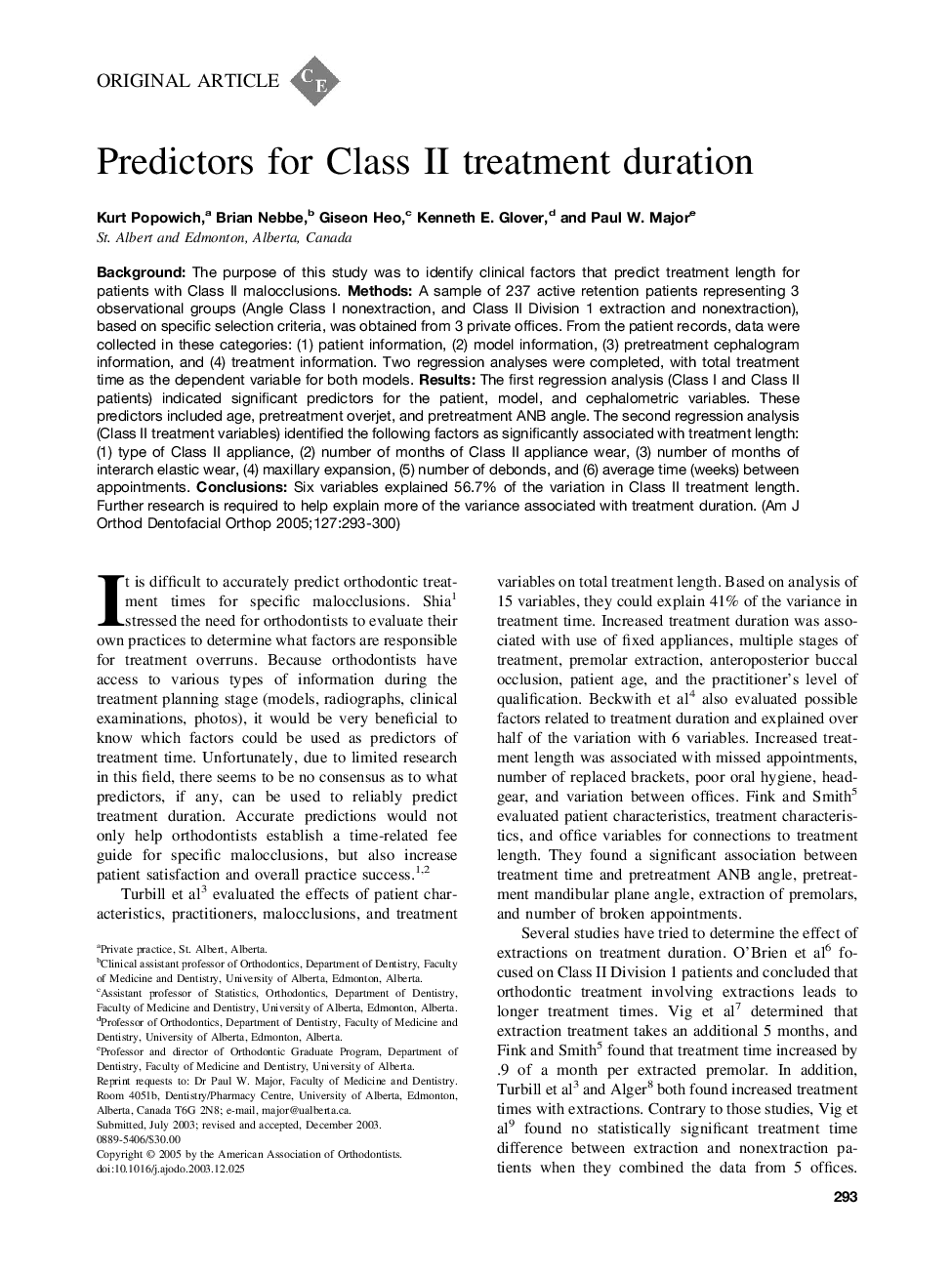| Article ID | Journal | Published Year | Pages | File Type |
|---|---|---|---|---|
| 9993035 | American Journal of Orthodontics and Dentofacial Orthopedics | 2005 | 8 Pages |
Abstract
Background:The purpose of this study was to identify clinical factors that predict treatment length for patients with Class II malocclusions. Methods: A sample of 237 active retention patients representing 3 observational groups (Angle Class I nonextraction, and Class II Division 1 extraction and nonextraction), based on specific selection criteria, was obtained from 3 private offices. From the patient records, data were collected in these categories: (1) patient information, (2) model information, (3) pretreatment cephalogram information, and (4) treatment information. Two regression analyses were completed, with total treatment time as the dependent variable for both models. Results: The first regression analysis (Class I and Class II patients) indicated significant predictors for the patient, model, and cephalometric variables. These predictors included age, pretreatment overjet, and pretreatment ANB angle. The second regression analysis (Class II treatment variables) identified the following factors as significantly associated with treatment length: (1) type of Class II appliance, (2) number of months of Class II appliance wear, (3) number of months of interarch elastic wear, (4) maxillary expansion, (5) number of debonds, and (6) average time (weeks) between appointments. Conclusions: Six variables explained 56.7% of the variation in Class II treatment length. Further research is required to help explain more of the variance associated with treatment duration.
Related Topics
Health Sciences
Medicine and Dentistry
Dentistry, Oral Surgery and Medicine
Authors
Kurt Popowich, Brian Nebbe, Giseon Heo, Kenneth E. Glover, Paul W. Major,
